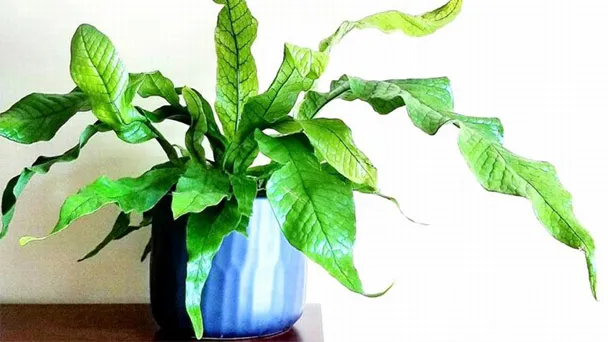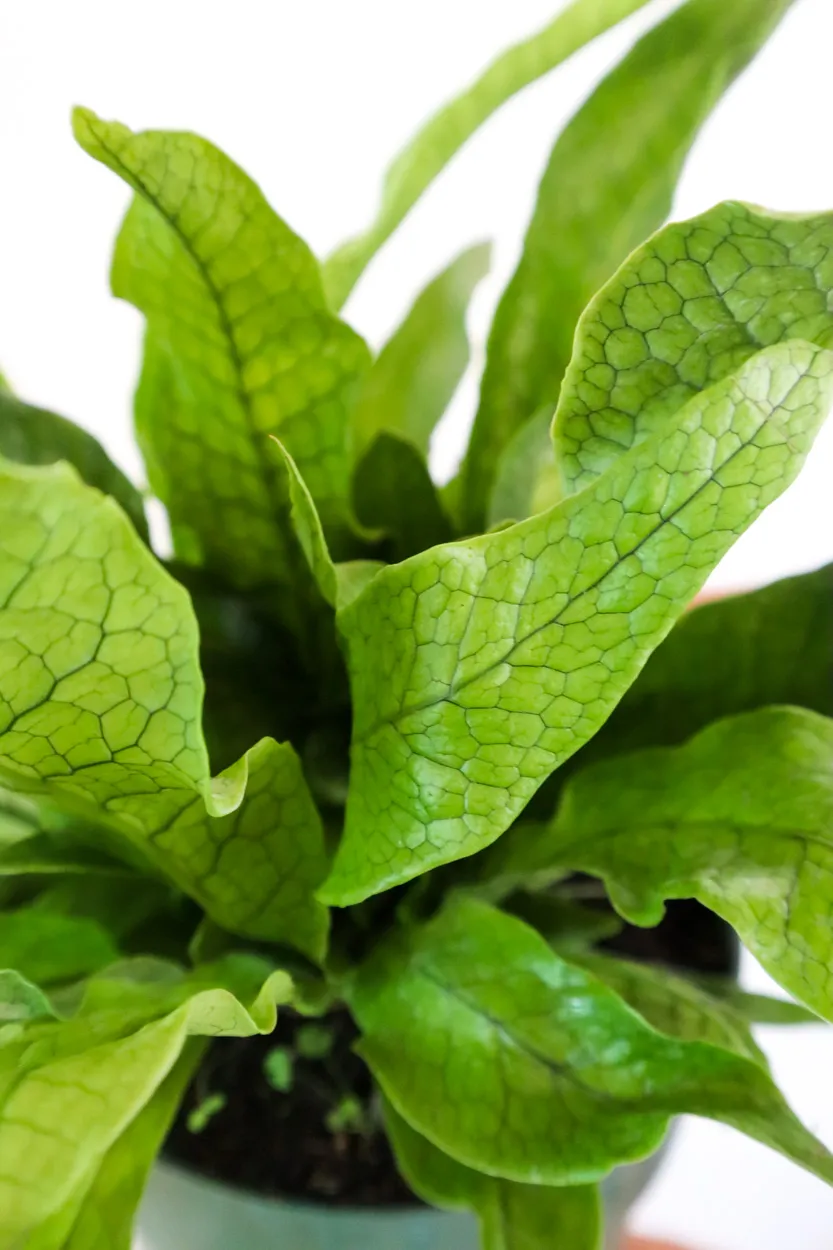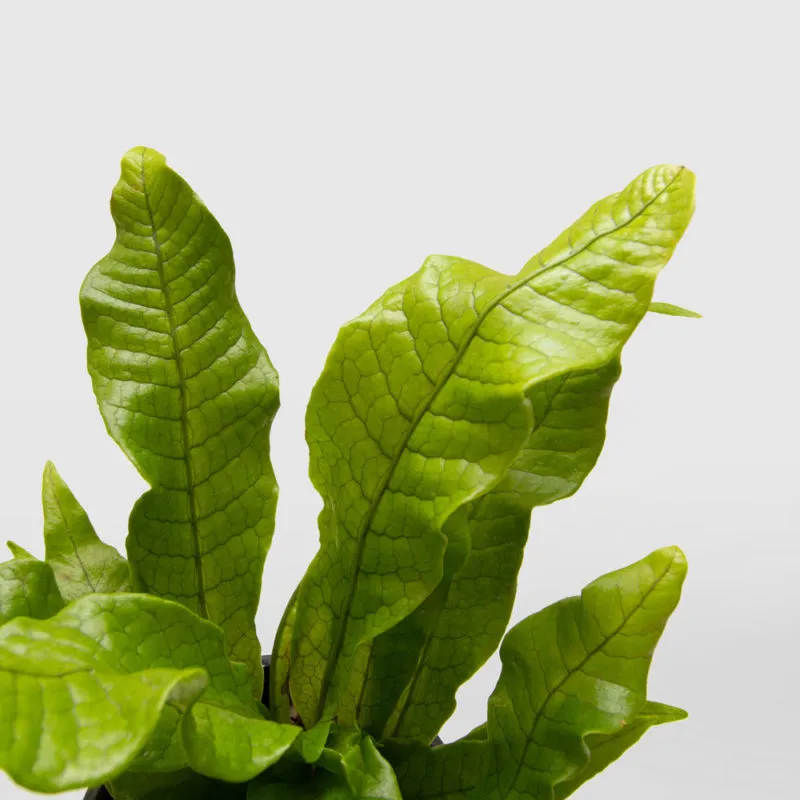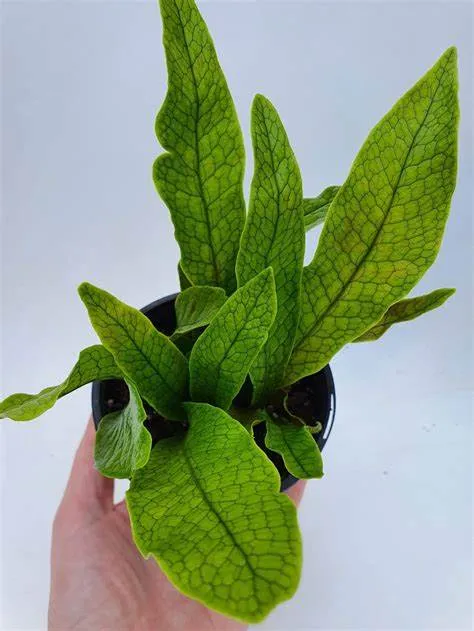Crocodile Fern (Polypodium Musifolium) Grow and Care Guide
Written by Ivy
Nov 29 2021

Crocodile Fern (Polypodium Musifolium) has a unique concave convex vein, which looks like a luxurious crocodile skin texture, hence the name of popular family green decoration. The origin of crocodile fern is an area with muggy climate and strong sunshine, so we should pay attention to watering more during daily maintenance of crocodile fern. When the crocodile fern leaves are fully grown, they can grow to more than 1m.

Of course, the air humidity of the environment should not be too high. If the humidity is too high and the environment is not ventilated, it is easy to cause the branches of crocodile fern to turn yellow and soft, and even turn black in serious cases. These plants will rot slowly, and black spots will appear on the leaves of crocodile fern.
 The process of crocodile fern propagation from division is very simple. We can dig out crocodile fern and use sharp tools to divide it into two or more independent plants. Each small plant must have at least one bud and leave enough rhizomes for the mother plant. The underground stem of crocodile fern spreads rapidly and can be divided when new buds appear from early spring to early summer. Ensure that there are enough roots when rametting. Crocodile fern may grow small plants on its roots or rhizomes. After it grows protective leaves, we can use a knife to cut off the small plants on its oldest protective leaves and take part of the base fern leaves, fix them on the snake board or rotten board with iron wire, and maintain high humidity to restore its growth.
The process of crocodile fern propagation from division is very simple. We can dig out crocodile fern and use sharp tools to divide it into two or more independent plants. Each small plant must have at least one bud and leave enough rhizomes for the mother plant. The underground stem of crocodile fern spreads rapidly and can be divided when new buds appear from early spring to early summer. Ensure that there are enough roots when rametting. Crocodile fern may grow small plants on its roots or rhizomes. After it grows protective leaves, we can use a knife to cut off the small plants on its oldest protective leaves and take part of the base fern leaves, fix them on the snake board or rotten board with iron wire, and maintain high humidity to restore its growth.
Crocodile Fern Quick InfoCrocodile Fern Care in DetailCrocodile Fern WateringCrocodile Fern SoilCrocodile Fern LightCrocodile Fern TemperatureCrocodile Fern HumidityCrocodile Fern FertilizerCrocodile Fern PruningCrocodile Fern RepottingCrocodile Fern Pest & Disease ControlCrocodile Fern Propagation from DivisionCrocodile Fern Benefits
Crocodile Fern Quick Info
| Botanical/Scientific Name | Polypodium Musifolium |
| Common Name | Crocodile Fern |
| Uses | Loose well draining soil |
| Origin | Australia |
| Light Care | Bright, indirect sunlight |
| Soil Care | Rich, well-drained soil |
| Temperature Care | 64 to 73 F(18 to 23 C) |
| Humidity Care | High humidity and regular misting |
| Watering | Regular water |
| Pruning Care | Pruning dead fronds |
| Fertilizer Care | Diluted water-soluble fertilizer |
| Propagation | Root division |
| Toxic | Non-poisonous plants |
Crocodile Fern Care in Detail

Crocodile Fern Watering
In the growing season of crocodile fern, under normal circumstances, we can water once every 2 ~ 3 days, and we need to water more in hot summer. In addition, the soil of crocodile fern planted in smaller flower pots dries faster. Therefore, the watering frequency should be more frequent than the plants cultivated in large flowerpots. How much we water crocodile fern depends on different soil properties. Sandy soil and coarse-grained mixed soil have poor water retention capacity, so we have to water more frequently, while clay or fine-grained soil can be less.Crocodile Fern Soil
When we plant crocodile fern, we must carefully select appropriate land for planting. We can choose fertile, breathable and loose soil for planting. Generally speaking, it is best to plant crocodile fern in sandy soil. After the soil is selected, we can start the renovation work. We must plough deeply and expose the soil to the sun for a few days. This can not only make the soil of crocodile fern more loose, but also eliminate some pests in the soil.Crocodile Fern Light
Crocodile fern likes sufficient scattered light. Direct strong light will cause the leaves to fade green, turn yellow or even fall off. Most crocodile fern only need scattered light, afraid of refracted light or strong light. It is suitable to decorate the dark corners of the family in an environment requiring shade. If crocodile fern is in an excessively dark environment for a long time, we can put crocodile fern in a sunny place every once in a while. In summer, we will build a shade for crocodile fern and spray water to moisturize in time.Crocodile Fern Temperature
Crocodile fern is not cold resistant. In winter, we should pay attention to the temperature of crocodile fern. It is best to move it back to indoor maintenance and place it at the scattered light indoors. The indoor maintenance temperature should be above 5 degrees, so as to ensure that it can survive the winter safely first. If the maintenance temperature is not enough, yellow leaves are likely to wither, and crocodile fern will freeze to death in serious cases.Crocodile Fern Humidity
If the crocodile fern kept indoors in winter lacks air humidity, the air is particularly dry, and the environment is ventilated, it is easy to breed red spiders. If you find some small spider webs on the leaves of crocodile fern, and the leaves begin to turn red and yellow, it is likely to be infected with red spiders.Of course, the air humidity of the environment should not be too high. If the humidity is too high and the environment is not ventilated, it is easy to cause the branches of crocodile fern to turn yellow and soft, and even turn black in serious cases. These plants will rot slowly, and black spots will appear on the leaves of crocodile fern.

Crocodile Fern Fertilizer
Crocodile fern only needs some fertilizer in the growing season and needs a small amount of frequent application. Base fertilizer or topdressing can be applied. When preparing mixed culture soil, base fertilizer is added, such as stable manure, bone meal, calcium superphosphate, etc. the release of base fertilizer is slow and the maintenance time is long, but the potted fertilizer is limited and can not meet the demand in the peak growth period. It is also necessary to apply quick acting fertilizer, especially extra root topdressing, which can timely supplement the lack of nutrients absorbed by crocodile fern's roots.Crocodile Fern Pruning
Crocodile fern does not need frequent pruning, but if the crocodile fern leaves are too lush and the density is large, it will affect the water permeability and light transmittance. Therefore, crocodile fern should also be properly pruned to control the density of the leaves.Crocodile Fern Repotting
Crocodile fern basin needs to be changed every 2-3 years. The basin can be changed from February to August. Be careful not to hurt the root. When crocodile fern returns to the basin, we can put 2cm thick broken bricks at the bottom of the basin to facilitate drainage. Then lay 2 cm thick charcoal to absorb the residual salt and toxic gas in the soil. Then add a layer of bone meal (rich in phosphate fertilizer) to facilitate root growth. We put crocodile fern into the basin and then fill the prepared substrate, so as to ensure the growth of plants and achieve good cultivation effect.Crocodile Fern Pest & Disease Control
- Anthrax
- Cercospora leaf spot
- Rust
Crocodile Fern Propagation from Division

Crocodile Fern Benefits
- For landscaping and greening: Crocodile fern has a very special and unique shape, and can also be cultivated for ornamental purposes.
- Crocodile fern can be used in leaf cutting products: Crocodile fern's dark green color, glossy leaf surface and striped reticular veins make it look strangely like crocodile skin. Unlike other ferns, crocodile fern has a long life span and can survive for more than six months if properly taken care of. And its strong leaves can resist drying and dehydration, and can be used in leaf cutting products.
Latest Updated
- Benefits of Bugleweed - 7 Science-backed Health Benefits
- Bugleweed Dangers & Side Effects - Is It Poisonous?
- How to Plant Evergreen Trees - What You Should Know
- When to Plant Evergreens - Grow Guide for Evergreen Trees
- 12 Wonderful Evergreen Shrubs for Your Garden
- 12 Popular Evergreen Plants with Pictures for Beginners
- When And How To Prune A Lilac Bush Like a Pro
- How to Grow & Care for Lilac Vine (Hardenbergia Violacea)
- Japanese Lilac Tree (Syringa Reticulata) Care & Propagation Guide
- Shumard Oak Pros and Cons - What to Know
Popular Articles
- Winter maintenance of Antirrhinum Majus
- How to Grow Terminalia Mantaly Tree
- How to Grow and Care for Crossostephium Chinense
- How to grow Antirrhinum Majus in spring
- Peristeria Elata (Dove Orchid) Profile: Info & Care Guide
- Underwatered Snake Plant (Sansevieria Trifasciata) - Signs And How To Fix
- How to Care for Brazilian Jasmine Plant (Mandevilla Sanderi)
- How to Grow & Care for Graptopetalum Purple Delight in Summer
- Rosa Chinensis (China Rose): Plant Growing & Care Tips
- How to Care for Baby Sun Rose (Aptenia Cordifolia)